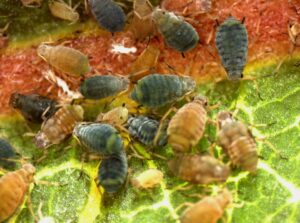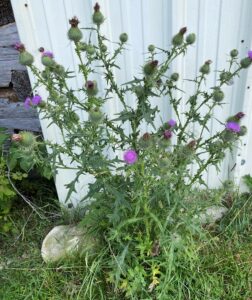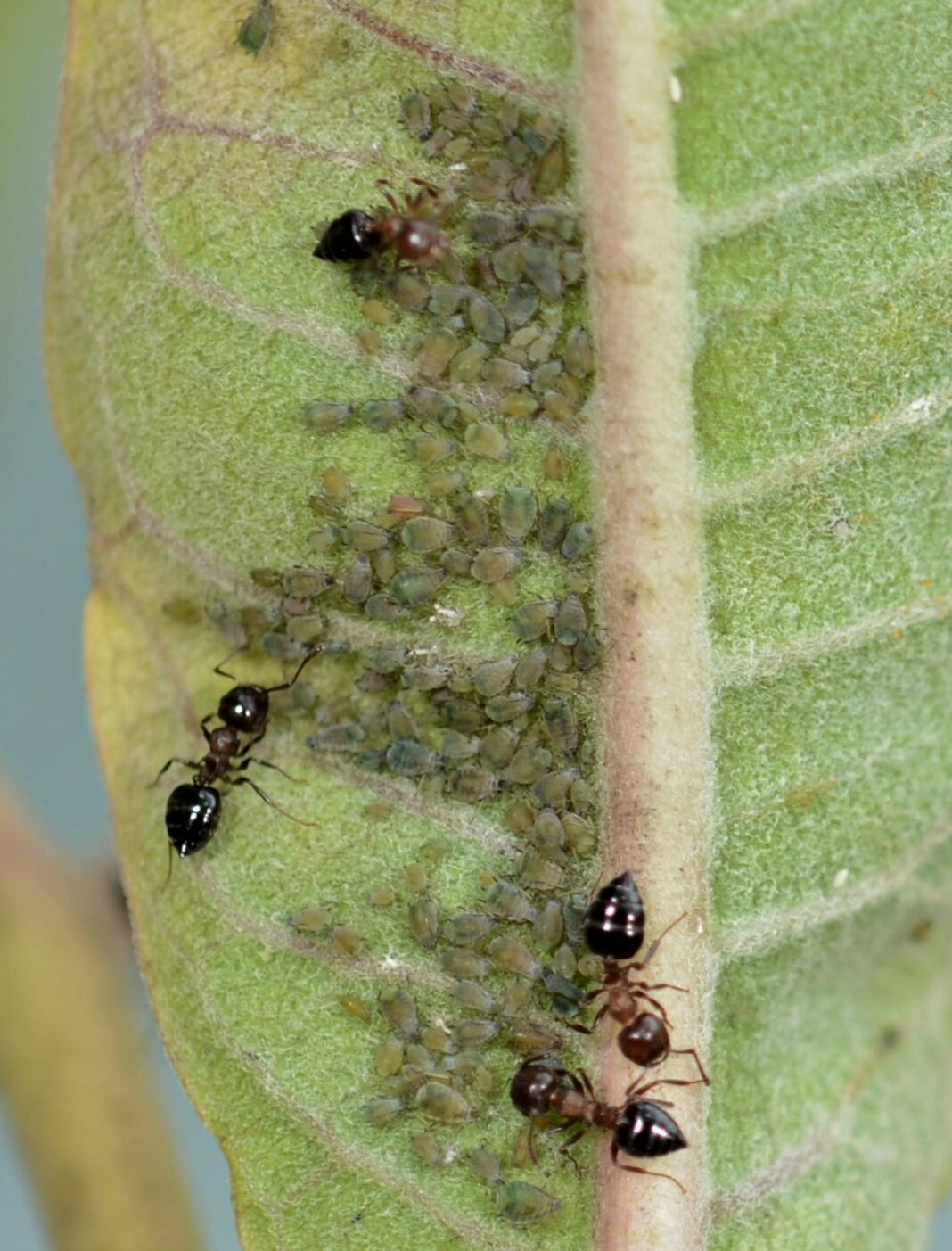by Dr. Joe D. Shorthouse
MANITOULIN—Manitoulin Island is blessed with rich biodiversity partly because of its location in the relatively warm waters of Lake Huron and the combined presence of boreal forests of Northern Ontario and deciduous forests of southern Ontario.
Insects play a key role in all forest types on Manitoulin and many of their interactions with plants are complex and fascinating. Among my favourites are ants and aphids.
Looking closely at milkweed and thistles, for example, you may see a miniature pastoral scene equivalent to a local daily farm where farmers tend cows and extract milk for our consumption. But on milkweed and thistle, the cows are aphids and the farmers are ants.
Ants are clever creatures with several species having developed the art of herding aphids and “milking” or extracting fluids from their bodies, that is an important food source for the ants.
When human livestock producers tend farm animals both humans and animals gain, resulting in a relationship biologists call symbiosis. The same principle applies to ants that “farm” aphids using surprisingly similar methods.
Aphids benefit from this symbiotic partnership by relying on ants to protect them from predators such as ladybugs and lacewings, allowing them to feed and reproduce more freely. In addition, ants transport aphids to new feeding sites throughout the host plants.

Aphids are small, soft-bodied insects about 2-4 mm in length that have both non-winged and winged forms. Throughout the summer, wingless forms reproduce by giving live birth and can do so without mating. In some cases, baby aphids in the process of being born are already pregnant! This is how populations of aphids increase so rapidly.
Ants that farm aphids on Manitoulin average about eight mm in length and run back and forth from their underground nests to the ‘pastures’ where aphids feed.
Aphids feed on the sap inside the vascular bundles of plants by piercing the bundles with tube-like mouthparts and sucking up the fluids. They need to consume large quantities of plant fluids to gain adequate protein and in doing so, must excrete equally large quantities of waste.

photo by Marilyn Shorthouse
This liquid waste is called honeydew and ants tend aphids in order to obtain honeydew which is a rich source of food. A layer of sticky honeydew is sometimes found on our cars when parked beneath aphid-infested trees.
Ants milk the aphids of their honeydew by stroking the aphid’s backs with their antennae, causing the aphids to eject the liquid food on demand. When the ants are in need of dietary protein, they simply eat a few of the aphids!
Ants make sure their enslaved aphids have adequate food, just as Manitoulin farmers ensure their animals are well fed. When aphids exhaust the fluids in the vascular bundles in one part of the plant, the ants move them to another more fluid-rich area, just like farmers move cattle from one pasture to another.
When an aphid-hunting ant comes upon a new herd of its quarry, it returns to the nest, leaving a trail of recruitment chemicals (called pheromones) for worker ants to follow. Once several ants arrive on the scene, the aphids are effectively enslaved.
Large numbers of aphids can damage host plants. If parts of the host plant fed upon by aphids begin to wilt, the ants move the aphids to juicier regions. Ants with stomachs full of honeydew return to their underground nest to pass the food to larvae and adult ants tending the nest.
Some kinds of ants prevent herded aphids from escaping by tranquilizing them with chemicals excreted from their feet. Ants even bite off the wings of the winged generation to prevent them from flying away.
Though we don’t know how aphids feel about this arrangement with ants, some experts argue that aphids willingly trade their freedom for the protection provided by ants. Even so, some aphids escape the attention of ants and establish colonies elsewhere.
Ants control the reproduction of aphids by boosting numbers of the most useful stages and phasing out the least productive ones. They do this by eating the least productive aphids. Humans similarly eat cattle that are no longer productive.
Some experts on ants feel that when ants dine on baby aphids or adults that have outlived their usefulness, they are practicing a form of population control. Sometimes when large populations of aphids produce an excess of honeydew, the honeydew attracts a toxic fungus, which fouls the aphid’s feeding sites. Being attended by ants helps prevent this from happening.
Some species of ants care for aphids during winter. Ants carry aphid eggs from the winged generation to their nests for the winter months where temperatures and humidity are optimal. Come spring when the aphids hatch, the ants carry them to a host plant to feed and reproduce.
The populations of most species of aphids are non-sexual and wingless during the summer, but changes in length of daylight and temperature in early fall triggers them to develop wings and form a sexual generation.
The sexual generation searches for new host locations and lays eggs to start a new colony the following spring. It is some of these new colonies that are discovered by ants and enslaved.
There are dozens of similar stories among the insects of Manitoulin Island. To discover them, one simply needs to look closely at plants in your garden, in nearby pastures or forest, or on the surface of the ground.
Dr. Joe Shorthouse is a retired professor of entomology who is a summer resident of Manitoulin Island. He is frequent contributor to the Expositor.





